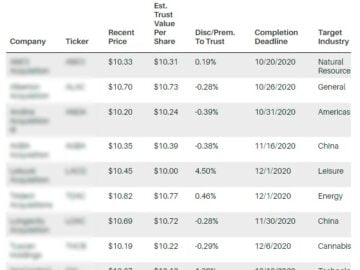Seeking out great stocks to buy is important, but many would say it’s even more essential to know which stocks to steer clear of. A losing stock can eat away at your precious long-term returns. So, figuring out which stocks to trim or get rid of is essential for proper portfolio maintenance.
Even the best gardens need pruning and our team has spotted a few stocks that seem like prime candidates for selling or avoiding. Continue reading to find out which three stocks our team is staying away from this week.
Struggling high-end retailer Vera Bradley (VRA) recently reported lower than expected quarterly results and lowered 2023 guidance in the face of inflationary and recessionary pressures. The company reported Q2 EPS of $0.08, versus $0.28 from the same period last year. Revenue came in at $130.4 million, missing consensus expectations of $132.51 million.
This isn’t the first rotten quarter for VRA. The designer of high-end handbags, apparel and luggage has been struggling for sometime, missing the consensus mark for earnings and revenue for six of the past seven quarters. According to management, investors should not expect to see a shift anytime soon. Management sees full year revenue of $480 – $490 million, less than the $497.56 million that Wall Street expects, indicaticating the pros could be overestimating the company’s recent performance.
VRA sees 2023 EPS in the ballpark of $0.20 – $0.28, representing a decline of 50% or more from the same period last year’s EPS of $0.57. “We expect the challenging macroeconomic environment to continue for the balance of the year and anticipate it will take additional time to return the Pura Vida ecommerce business to growth, high gas prices and other inflationary pressures will continue to impact the Vera Bradley factory channel, and there will be continued pressure on gross margin. Therefore, we believe it is appropriate to further adjust our outlook for the fiscal year,” CEO Rob Walstrom commented.
Aspiring meme-stock traders have taken a shine to Roblox (RBLX) once again. While some may get lucky, properly timing short-term trades amid current volatility, anyone planning on holding the stock is taking on too much risk if they invest in Roblox now, considering the company’s financial metrics.
Roblox provides users with a fun and immersive platform that gained major appeal during the pandemic boom. People were stuck inside and abiding social restrictions, many took to gaming as a distraction, which was great for RBLX shareholders. Fast forward to today and the share price is down more than 70% from its November 2021 high.
What’s even more alarming is Roblox’s decline in bookings, defined by the company as “revenue plus the change in deferred revenue during the period and other noncash adjustments.” The video game producer posted a second consecutive quarterly decline in Q2, with bookings falling 4% year-over-year. Average bookings per daily active user fell 21% year over year. It seems likely that the trend will continue, at least for the next couple of quarters.
Wall Street’s earnings expectations of a $0.25 loss for the second quarter were low. Roblox missed the mark, reporting a loss of $0.30 per share. The stock is gaining attention for all the wrong reasons according to Cowen analyst Doug Creutz who recently initiated coverage of RBLX with an Underperform rating and a $31 price target citing an idealized valuation.
While the future remains bright for renewable energy, not all solar stocks are a buy. Provider of solar engineering and construction services, iSun Inc. (ISUN), has seen operating losses skyrocket alongside revenue increases in recent years.
iSun reported second quarter 2022 revenue of $16.5 million representing a $12.1 million or 278% increase over the same period in 2021. Alongside top line growth over the past year, the company has reported $15.3 million in operating losses. Operating income in the second quarter was a loss of $5.6 million compared to a loss of $2.8 million over the same period in 2021. YTD operating income was a loss of $11.3 million compared to a loss of $5.4 million during the same period in 2021.
Given the company’s already high debt position after a series of acquisitions in 2021, the additional losses could force the company to raise equity inorder to de-lever its balance sheet which could mean further declines for iSun.
The small, unprofitable solar company’s stock is down 72% over the past 12 months, but it’s far from a bargain considering the risk factor.














